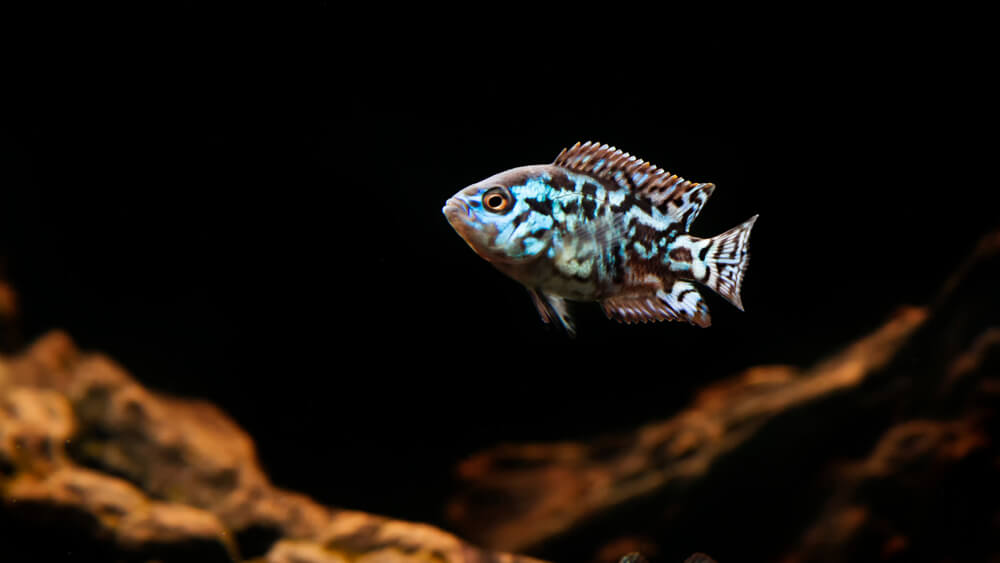
Discover how to care for the stunning Electric Blue Jack Dempsey. Learn about tank size, setup, tank mates, diet, lifespan, and expert tips—all in a friendly, easy-to-understand guide.
The Electric Blue Jack Dempsey Care Guide
Introduction – Why Electric Blue Jack Dempseys Shine in Our Tanks
Every time I spot an Electric Blue Jack Dempsey, it feels like a flash of electric sky in my aquarium. That vivid blue glow makes them stand out like underwater gems. But caring for them is like safeguarding a delicate shard of glass—it’s rewarding, but requires precision and respect.
Quick answer: Electric Blue Jack Dempseys are striking, semi-aggressive cichlids that need ample space, stable water, and a varied diet to stay vibrant and healthy.
Understanding Electric Blue Jack Dempseys
Size
These fish typically reach 6-8 inches in length, depending on genetics and care.
Quick answer: Electric Blue Jack Dempseys grow to about 8 inches as adults.
Lifespan
With proper care, they can live 10–15 years, offering a long-term companionship.
Quick answer: Expect your Electric Blue Jack Dempsey to live 10–15 years in a well-maintained tank.
Setting Up the Right Tank
Tank Size
Aim for at least 55 gallons for one fish, but consider 80+ gallons to give them room and reduce territorial stress. A species spotlight suggests 190 liters (~50 gallons) as a base.
Quick answer: Use at least a 55-gallon tank per Electric Blue Jack Dempsey—bigger is always better.
Water Conditions
They prefer warm, slightly acidic to neutral water:
-
Temperature: 72–86°F (but staying under 78°F may help reduce aggression).
-
pH: 6.5–7.0, although they adapt up to 8.0.
-
Hardness: Ideally 8–20 dGH.
Quick answer: Keep water at 72–86°F, pH 6.5–7.0, and moderate hardness (8–20 dGH) for healthy Electric Blue Jack Dempseys.
Tank Setup & Decor
Use a sand substrate, as these fish like to sift and dig. Provide hiding spots with rocks, driftwood, and sturdy plants. Dim or LED lighting helps showcase their color and reduce stress.
Quick answer: Sand substrate, caves, driftwood, and soft lighting create a natural, stress-free habitat for Electric Blue Jack Dempseys.
Filtration & Water Maintenance
Strong filtration—like canister or efficient HOB filters—is essential. Perform regular water changes (20–30% every 1–2 weeks) to maintain water quality.
Quick answer: Use strong filtration and keep up with regular water changes to keep your fish healthy and bright.
Choosing Compatible Tank Mates
These cichlids are semi-aggressive, so choose tank mates with care. Good options include:
-
Firemouths
-
Severums
-
Convict cichlids
-
Blue Acaras
-
Rainbow fish
-
Clown loaches
These species match size and temperaments better.
Avoid small, peaceful fish—they may become snacks.
Quick answer: Pair with similar-sized cichlids like severums or convicts; avoid small, passive fish.
Feeding & Diet
Provide a varied omnivorous diet:
-
High-quality pellets or flakes
-
Frozen or live options like bloodworms, brine shrimp, blackworms, and daphnia.
Feed 1–2 times daily—just enough for them to eat within 2–3 minutes.
Quick answer: Feed varied food once or twice a day, finishing within 2–3 minutes for balanced growth and color.
Behavior & Common Health Issues
They are territorial and will dig, set up territories, and defend them—especially when breeding.
Watch for illness—e.g., dropsy (look for swelling; treat with clean hospital tank and Epsom salt) and white spot (treat by raising temperature to around 85°F and improving water quality).
Quick answer: Provide plenty of territory and watch for diseases like dropsy and white spot—prompt treatment can save your fish.
Breeding Tips
These fish are relatively easy to breed. Look for the “black breeding coat”—when their colors darken—as a sign to separate them into a breeding tank. Set up bare rocks or caves, warmer temperatures, and frequent water changes (30% every 3 days).
Both parents guard eggs and fry. After hatching (~3 days), they may feed frittered food to fry. Fry care includes crushed flakes or baby brine.
Quick answer: Breeding occurs when they turn black; provide caves, warm water, and frequent changes—parents defend eggs and feed fry naturally.
Common Questions (FAQ)
How big do Electric Blue Jack Dempseys get?
Around 8 inches as adults.
What is the ideal tank size?
Minimum 55 gallons per fish; 80+ gallons preferred.
How long do they live?
10–15 years with proper care.
Can they live with other fish?
Yes, with similar-sized semi-aggressive species; avoid small fish.
What water conditions do they need?
Temp 72–86°F; pH 6.5–7.0; hardness 8–20 dGH.
My Personal Tips for Success
I once underestimated how territorial my Blue Dempsey would be. Adding large rocks and split hiding spaces helped reduce aggression instantly. Their electric blue became even more vivid when I turned on soft LED lighting just before dusk—like catching a blue sunrise underwater.
Feeding variety was a game changer: switching between pellets and frozen blackworms kept them lively and less bloat-prone.
Lastly, I learned that frequent water changes aren’t a chore—they’re insurance. Fish health thrives when water is fresh and stable.
Conclusion – Why They’re Worth It
Caring for Electric Blue Jack Dempsey is a blend of art and responsibility. With the right tank size, stable water, thoughtful tank mates, good diet, and attentive care, these fish will grow, thrive, and gift you with years of breathtaking beauty.
If you’re ready for a bold addition to your tank, give them what they need—and watch them glow.
